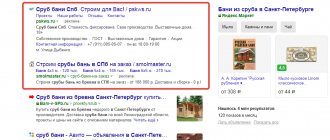- KtoNaNovenkogo
- SMM marketing
- Are you here
September 29, 2019
- What is a landing page in simple words
- Landing page examples
- 12 steps to create the perfect landing page
- Examples of errors that kill your landing
Hello, dear readers of the KtoNaNovenkogo.ru blog. Today we will talk about such an important thing as a landing page , which is very often called a landing page in a bourgeois manner (from the English landing page - landing page). What is it and why is it so important?
Let's devote the current article to answering this question, and also consider in detail those points that are very important when creating landing pages, and consider all this using specific examples of landing pages and the techniques that are used by the best usability experts to increase the effectiveness of landing pages .
Landing - what is it in simple words?
Landing is a one-page website (only 1 page) aimed at promoting a specific type of product or service. The main task of such a resource is to encourage the visitor to perform a target action.
A target action is the action to which a potential client is encouraged. This could be an application for consultation, subscription, purchase, etc. To collect email and telephone numbers, the landing page provides a feedback form.
- A landing page differs from a regular website and a business card website in its special structure. It is a concentrate of marketing tricks.
The landing page consists of certain blocks with comprehensive, but at the same time concise information. There are no distractions on the landing page. The visitor is given only two behavior scenarios - either perform the target action or not do it.
There are many more such scenarios on a regular website. The client uses the menu to navigate through the pages in search of the required information. As a result, his attention is scattered, and he is distracted from performing the action you require.
Basic concepts about landing:
- This is a one page site (yes, just 1 page). The user does not have the opportunity to go deeper into sections and subsections.
- Landing is a concentrate of marketing tricks. Each block plays a specific role and stands in a specific place.
- A landing page is used to promote 1 specific type of product and service.
- The landing page is posted on the Internet (like a regular website). A person can get to it by clicking on the link.
- Once on the landing page, the client finds exactly what he is looking for. Exact compliance with the request is ensured due to the narrow specificity of the resource.
Now you have a rough idea of what a landing page is. But we recommend that you understand in more detail what landing pages are and why they are needed.
Advantages and disadvantages
Let's say you find yourself on the list of lucky ones who are suitable for a one-page website. But this does not mean that you necessarily need to do only this now.
As you remember, there are always options. Therefore, let’s weigh the pros and cons and certainly bring this issue to its logical conclusion.
1. Advantages of landing pages
The main advantage that I want to highlight separately is the opportunity to get maximum conversion from visitor to action.
This is definitely not always good, especially when there is not much energy to process applications. But on the other hand, even if half of the applications are not mature, they can still be developed for the future.
- The landing page carries a specific advertising offer;
- From a technical point of view, creating it is easier than creating a full-fledged website;
- Using multiple landing pages allows you to segment your audience;
- With proper preparation, the landing page can not be changed for many years;
- With the help of a landing page, you can quickly start and sell now.
2. Disadvantages of landing pages
If we talk about the disadvantages of landing pages, then, like any popular idea, many expect miracles from them.
However, the general trend of Internet marketing, and digital technologies in general, is that while becoming more simple and understandable to the end consumer every year, they are becoming more and more complex inside.
And the more complex the mechanism, the higher the qualifications of the person who develops it.
- You can place no more than one or two (well, maximum 10) offers on the landing page;
- Technically simpler does not mean cheaper. A good landing page costs money;
- Reveals just one sentence and a little about the company;
- Landing pages are not applicable in every field of activity.
Landing page goals and objectives
So, the main goal of creating a landing page is to encourage a potential client to complete the target (you require) action. In most cases, this comes down to collecting customer contact information (mail, phone) for the purpose of their subsequent transfer to the sales department.
In some cases, landing pages are used for direct sales. However, the conversion (efficiency) of such landing pages is much lower. After all, it’s difficult to sell directly to customers who first learned about you from a landing page. They do not yet have the required level of trust in the company. Therefore, the easiest option is to get contact information, and then interact with customers and involve them in the sales funnel.
- Landing pages have proven their effectiveness in advertising campaigns. This is why 60% of B2B organizations use landing pages .
Landing pages are used in advertising campaigns:
- To collect contacts of potential clients (main purpose);
- For direct sale of goods and services (advisable in rare cases);
- To increase brand awareness online (rarely, if budget allows).
Using this tool, you can differentiate yourself from competitors, reflect the advantages of your sales offer, as well as handle customer objections and increase their trust.
- Landing page is your personal online marketer who works 24 hours a day, describing all the advantages of your business.
Types of landing pages
We suggest looking at an example of what a landing page is and which landing pages are actively used by marketers in the B2B (business to business) and B2C (business to the end client) segments.
Click-through Page
To perform a targeted action on such a page, the client only needs to make 1 click. This landing page has neither an application form nor a complex design - just 1-2 screens and a button.
Lead generation page
This is the most popular type of landing page with a more complex structure and design. This landing page is designed for deep communication with the client. It has an application form and CTA elements (buttons).
Squeeze Page
On such a page, the visitor is offered to receive some useful material for free in exchange for an email. This type of landing page is often used in the information business to promote services (trainings, courses).
Sales page
Landing pages designed to directly sell a product. The length of such a landing page depends on how detailed the essence of the product needs to be revealed to the user and differentiated from competitors. It has “Order Now” buttons.
Books by Landing Page
- Ideal Landing Page. We create selling web pages. Authors: A. S. Petrochenkov, E. S. Novikov. Best seller and bestseller. Litres rating: 4.28.
- An example of an ideal Landing Page. Author: Alexey Nomain. Rating 4.00.
- Landing that sells. Step by step guide. Author: Evgeniy Sergeevich Vitkovsky. Rating 4.05.
- All about landing pages. Collection. 6 author's publications in one! Author: Alexey Nomain. Rating 4.25.
- How to copy a landing page. Author: Alexey Nomain. Rating 4.00.
What is the USP on a landing page?
The concept of USP, or unique selling proposition, which is closely associated with landing pages, is currently very popular. And this is absolutely true, because with a competent approach to developing a landing page, on the first (main) screen there is a heading that reflects the essence of the offer, or USP.
It is recommended to compose such a headline (offer) using a special 4U technology, reflecting:
- Uniqueness;
- Ultraspecificity;
- Urgency;
- The usefulness of your proposal.
Many entrepreneurs often make the mistake of developing one landing page with several USPs. This way they are trying to save money. But, as you know, the miser pays twice. This results in a waste of advertising funds. There are visitors, but no applications. Why is that? It's simple, the client's attention is defocused. He came with the request “plastic windows”, and he was also offered to look at “interior doors”, and finally snack on “bright custom-tailored curtains”. You can't do that.
- Important : a landing page should be created only for one type of product or service. Otherwise, you'll be throwing money away.
How does the landing page work?
In most cases, lead generation pages are used when conducting advertising campaigns. Lead generation is the process of receiving leads (applications from potential customers).
Let's look at how such landing pages actually work:
- The visitor enters a query in the Yandex or Google search bar, after which he gets to the capture page (landing page). To do this, you first need to set up contextual advertising or perform SEO promotion.
- After landing on the capture page, the potential client is consistently provided with the necessary information. To do this, the marketer develops a special scenario for interaction with the landing page.
- After the customer has studied the information, he decides whether to leave a request or close the landing page and continue searching. This largely depends on the value of the offer itself, the competitiveness of the business niche, the cost of the product or service, the level of trust in the company, the quality of the landing page itself and other factors.
To achieve a target action, you first need to catch the client’s attention with a selling headline, then reveal the essence of the service (product) itself, close objections and increase the level of trust. For each goal, a specific block is provided on the landing page. But we'll talk about this later.
Some landing pages sell better, others sell worse. The performance indicator of a landing page is conversion.
Why do you need a landing page?
Landing pages are in demand in the process of product promotion, largely due to the fact that they can increase your conversion rate in the most affordable and beneficial way for you. This is because landing pages are designed to optimize conversion:
1. Landing pages have phrase/ad match , that is, when the title of your ad matches the title of the landing page. This factor inspires the trust of visitors, because they immediately see that they are on the page they need.
Below is an example of a successful phrase match between advertising and landing page:
Advertising of the Route marketing automation service in search results
And here is the landing page that an Internet user lands on after clicking on an advertisement:
Caption: “An automation tool built for marketers, not programmers.”
The phrase “marketing automation tool” echoes the title of the landing page and seems to enhance its effect. Thus, the visitor knows for sure that he got to the site he was going to, and that you did not deceive him.
Phrase matching of advertising and landing page headings allows you to avoid the confusion that inevitably arises if a person, requesting something specific and specific, after clicking, goes to the main page of the site, where he again has to look for the desired section. Do not mislead visitors - use uniform wording.
2. Attention ratio 1:1. This means that the number of clickable elements on the page is equal to the number of page targets. An ideal landing page should achieve only one goal. Any element that is not related to the target action is recognized as distracting and scattering the visitor’s attention.
This condition is mandatory for effective landing. Don’t give visitors the opportunity to leave the landing page without taking the target action. You will minimize the possibility of such a scenario occurring if you remove all extraneous clickable elements from the landing page.
Below is a landing page for a transport company developed by our team on the LPgenerator platform. The landing page has only one goal and contains a corresponding clickable element - the “Order delivery” CTA button:
3. Ease of performing a split test. The goal of conducting A/B tests is to find the optimal landing page option that generates the maximum number of leads.
By comparing different versions of the same landing page with each other, you can determine what your target audience responds to best, try out some new tactics and means, and repeat this process as long as it takes to find the most effective option - that combination of elements , which give the maximum number of conversions. It’s important to note that split testing a landing page is much easier to carry out than testing the main page of a website, and all because you are dealing with only one goal, and not several.
What is conversion?
Imagine that 100 people visited your landing page and 10 of them left a request. In this case, the conversion will be 10%. If only one person left a request - 1%, and so on.
That is, in simple words, this is the percentage ratio of the positive number of clients (who left contact information) to the total number of visitors on the landing page over a certain time period.
- The conversion rate of lead generating pages is higher than that of sales pages. The point is that they don't sell anything directly. On such a landing page, the visitor is offered to leave an email for a free consultation or other “bun”.
Conversion largely depends on the literacy of landing page development. After all, it is extremely important that the landing page guides the visitor through each stage of the funnel: catches attention, talks about the service or product, inspires trust, handles objections, etc. Let's look at the structure of a conversion capture page.
- Important: according to statistics, landing page conversion is 1.5-2 times higher than website conversion. This is due to many factors, including exact match to the search query, ease of interaction and selling structure.
Video on Landing Page
Video is a must-have and must be used. This is the easiest way to interact with the visitor. Research from eyeviewdigital.com shows that videos increase conversion rates by up to 80%.
People have been glued to their television screens since the mid-20th century. Video has changed the Internet, and YouTube is now “the new search engine.”
- Everyone is lazy and likes to watch rather than read.
- Increases the length of stay on the landing page.
- If you feature yourself or company employees in a video, credibility increases significantly.
Try short and long videos to see what your customers need. Some things require long videos, while others need short, “commercial” style videos.
Write a script before recording your video. Use an external microphone for high-quality sound.
Reuse of content . Upload your video to YouTube and optimize it for SEO. Video is 52 times more likely to appear on the first page of Google than a text article (most likely due to lack of competition).
If you have an online product or service, you can put together promotional, educational, or training videos and embed them on your landing page in minutes using a service like Jing.
Selling landing page structure
This information will be useful to everyone: customers who choose a web studio to develop landing pages, as well as directly to developers who are just learning the basics of Internet marketing. All the described blocks are vital for the effective operation of the landing page. But they need to be used wisely.
Headline or offer
As described above, the headline, also known as the offer or USP, reflects the essence of your offer. This is actually what the landing page was created for. The juicier and more interesting the offer, the higher the customer involvement in studying the landing page and the higher the conversion.
Block - “Service Description”
Here you should describe the service or product (in more detail, in relation to the title). Reveal the essence of the proposal: what you do, what it gives the potential client, what he will receive in the end and for how long. Indicate the strengths of the offer, make it so that you yourself want to buy your product or order a service. If this doesn't happen, it's unlikely to happen to potential clients.
Block - Description of benefits"
This section of the landing page consists of small bulletins (paragraphs) that comprehensively reflect your advantages and features. Simply put, it shows the client why it is beneficial for him to cooperate with you. Everything here is quite simple and clear.
In some cases, an entire landing screen is dedicated to one important benefit. It all depends on the specific situation.
The main thing when making this block is not to pour water. Remember that you won’t surprise anyone with an individual approach and a professional team. Try to be original. Think about how you really differ from your competitors. Specify the facts, if experience - indicate how many years, if fast delivery - how many days, if unique technologies - list which ones. Don't be unfounded.
Block - “Operation scheme”
It is important that your potential client understands the entire process of interaction with you - from the application to the receipt of the final product or service. A block diagram of the work will help with this. It should clearly and clearly reflect the phased development of events.
Block - “Trust”
Place on the landing page everything that can increase the trust of your potential clients and close objections.
- Reviews and awards.
- Cases.
- Real photos (team, production process, product, etc.)
Blok - “We are in numbers”
According to statistics, up to 60% of users do not read, but only scroll through the information on the site, without delving into the essence. A block with numbers helps to attract their attention.
However, it is recommended to use it only if you really have something to brag about. You should not invent non-existent facts or write ridiculous data, for example, 100 cups of coffee were drunk while developing websites. This, however, is of no interest to anyone.
Block - “Guarantees”
All areas of business are competitive these days. Not all entrepreneurs work honestly, so many clients have doubts. It will be a clear advantage if you can give guarantees to landing page visitors before starting cooperation. This will dispel doubts and increase the effectiveness of the landing page. However, if guarantees are not your thing, you can easily do without this block. Don't make false promises.
Block - “Comparison”
In some cases, a comparison block is used on the landing page. It highlights the benefits of your service versus the alternative the customer might choose. However, this is not always appropriate. You need to make sure that your USP compares favorably with the alternative, otherwise the client will have additional doubts.
Block - “Consequences”
This block makes the client think about what will happen if he refuses to take advantage of your offer. Just like the previous one, it is not appropriate in all cases. You should first make sure that it does not create a depressing atmosphere and does not inspire negative thoughts on the client. Otherwise he will get sad and leave without leaving a request.
Block - “Client Pains”
It is becoming less and less common on landing pages. The thing is that marketers have begun to use customer pain so often that it sometimes causes laughter. Do your teeth hurt? Feeling bad but want to save money? We are waiting for you at the Berezka dental clinic, where inexperienced doctors will pull out your tooth for 30% less. Laughter, and that's all. Use pains correctly.
Block - “Application Form”
One of the most important blocks on the landing page. It is with the help of the feedback form that clients will leave you their email, phone number and other data. There can be several forms on the landing page. As a rule, they are placed at the beginning and at the very end, and CTA elements, or buttons, to put it simply, are placed between the logical blocks. They additionally encourage the visitor to take action without overloading the page.
- Important : It is strictly forbidden to encourage the client to leave a request. Yes, you read that right. Judge for yourself, why should a client leave you their contact information just like that? Offer him something in return: a free consultation or cost estimate. You can also use various offer boosters, such as lead magnets and promotions, but we’ll talk about that later.
All of the above blocks can be arranged in different sequences. Therefore, it is important that the marketer first develops a scenario for interaction with the landing page.
Needed or not
The idea of creating one-page websites began to gain popularity back in 2010 (approximately), and their popularity is still not subsiding. Or rather, it even grows. And mainly because from the point of view of business owners, a landing page should work something like this:
- The user lands on the page;
- Admires the sales and packaging of the business;
- Leaves a phone number and looks forward to the manager’s call;
- Runs to bring money to your company.
I don’t want to say that this doesn’t happen – it very much happens, but not in all areas of business and certainly not with every landing page.
Therefore, let’s move on to the most appetizing part - why do you need a landing page and who is it ideal for (and at the same time, what to sell through the landing page)?
I will answer this question step by step: who is allowed and who is not allowed, and categorically.
Do you need a ready-made Landing page?
Order development from our agency
View price
Do it yourself using the constructor
Go to constructor
Who needs a landing page
I’ll start with someone who will probably benefit from a landing page that sells and will bring hundreds of thousands, and maybe even millions of dollars into their warm pocket. But remember that there are always exceptions and perhaps your project is just like that.
1. Simple and inexpensive products
The less time a person needs to make a decision, the more suitable a one-page site is in this case.
House decoration is a popular and user-friendly service
2. Complex and expensive products
If it is important for the client to present everything in a structured and consistent format for ease of digestion, then the landing page is also useful.
Apartment with an area of 380 sq. m can also be sold through landing page
3. Communication with you is important
Can’t the client make the final decision without you? Or do I need to ask him for details? Then this tool is right for you again.
It is clear that a serious project needs to be discussed for more than one day
Who doesn't need a landing page
And now a few points about those cases when the advantages of a landing page do not matter and you do not need a one-page website.
Although if you have doubts (or you again consider yourself an exception), then write in the comments, and we will give you free advice - “to do or not to do” from our 6+ years of experience.
1. Large assortment
For a business that sells over 20 different products at retail, it is better to choose a classic online store. There are exceptions, for example, wholesale sales. But still rare.
100,000 catalog items will be difficult to sell using a landing page
2. Clear product
If your product does not require a presentation, and the client is only interested in reading more about your company itself, then a multi-page website would be better in this regard.
The important thing here is not to sell an examination, but to build trust in the veterinary clinic
3. A very large company (you don’t sell anything)
Let's say you are ROSNEFT, and it is logical that you do not need to sell anything, you need a website more to communicate with clients and a few other tasks.
For example, posting current news or offers for investors
In all other cases, the right landing page shows itself to be a popular and effective sales tool.
This is understood not only by sellers, but also by buyers; people are accustomed to the one-page website format; they are ready to leave their contacts there, make requests and buy.
4. Outbound sales
There is no need to hope for many leads through a landing page in those areas where all sales are made through outbound calls and meetings. Not in the sense that there won’t be any, but most likely the result will be so-so.
Another video that you should definitely watch before making a choice is a landing page or a website of another type.











